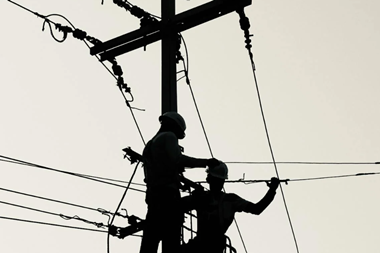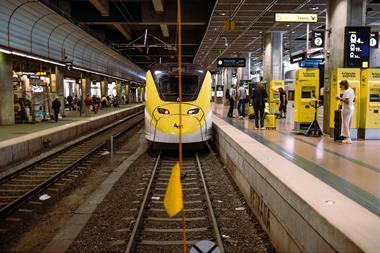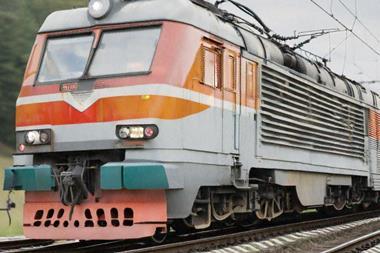Could infrastructure be the silver lining in the tumult that is the global financial crisis? Ian Cundell explores the opportunities for investors at a time when traditional asset classes are clouded in pessimism
Amid the recent carnage in the financial markets, with stock markets plunging and financial institutions failing, one deal slipped by largely unnoticed. American Insurance Group (AIG), as part of its emergency rescue, sold its 50% stake in London City Airport to its co-owner, Global Infrastructure Partners, for a reported £250m (€315m) - two thirds of the price it paid.
It was, of course, a distressed sale as AIG sought to raise money to repay a loan from the US Federal Reserve. And although the peculiar circumstances and extraordinary terms of the deal were noteworthy in themselves, the most important point to appreciate is that it was far from unique.
Taken in isolation it would give a grossly misleading picture of the health of the airport sector. At the same time, George Best Belfast City airport was sold to Dutch investment company ABN Amro Global Infrastructure Fund by its Spanish owners for £132.5m. With the sale, the Ferrovial Group has more than trebled its money since buying the airport for £35m five years previously.
On the other side of the Atlantic, Chicago Mayor Richard Daley urged the city council to approve the privatisation of Midway Airport - the first privatisation of an airport in the US, which was awarded to an American-Canadian group.The city awarded a 99-year lease agreement to Midway Investment and Development Co., comprising John Hancock Life Insurance Company, Citi Infrastructure Investors, and Canadian airport operator YVR Airport Services.
The privatisation of the airport is intended to improve operations and further develop the gateway facility into a major hub in the country. It will also infuse funds, which will be used to upgrade Chicago's ageing infrastructure.
Between them, these three deals illustrate some key features of investment in infrastructure, not least that even in the context of global turmoil there are still clearly willing buyers. But perhaps more interesting is that this set of deals illustrates that infrastructure has a distinctive risk profile compared with more conventional investment classes. Why is this?
Earlier this year McKinsey & Co published a paper on infrastructure that began: "Rarely have investments in global infrastructure - everything from roads, bridges, and tunnels to schools, hospitals, and power plants - held the spotlight as they do now.
Governments around the world are increasingly comfortable using private money to finance such projects, while investors have poured large sums into specialist funds in hopes of obtaining attractive inflation-adjusted returns. From 2006 to mid-2007, we estimate, private investment funds raised $105bn (€77bn) for infrastructure projects."
According to McKinsey, over the past two years the flood of money into infrastructure funds has been staggering, with the world's 20 largest funds having nearly $130bn under management, 77% of which was raised in 2006 and 2007 with about 63% from new entrants. Taking into account leverage, $1bn of equity funding could, in some situations, pay for up to $10bn in projects.
Infrastructure as an investment opportunity (never mind potential asset class) is very new: its history is rooted in the privatisation movement of the 1980s that began in the UK and gradually spread around the world. Macquarie Group has run infrastructure investment funds for 15 years. Arthur Rakowski, executive director at Macquarie Capital Funds describes infrastructure investments as "essential services with high barriers to entry that are regulated".
Heading into a potential downturn, those three key elements highlight almost all that is needed to grasp the opportunities and pitfalls of infrastructure. The services are essential: although demand for them is certainly not immune to economic circumstances, they are far less volatile than consumer goods and services. Electricity is still needed, roads will still be travelled upon and, in the context of global economics, emerging markets will continue to add new demand.
For example, earlier this year 3i raised $1.2bn for its 3i India Infrastructure Fund, exceeding its target by 20%. In 2007, 3i had formed a strategic partnership with the Indian government-owned India Infrastructure Finance Corporation Limited to co-operate on financing infrastructure projects on the subcontinent. It was one of the first such agreements between the Indian government and a third-party investor to support the estimated $450bn of infrastructure investment that India requires by 2012.
Targeting around 10 investments over the investment period, the fund's portfolio already includes a $227m investment in Adani Power, which is developing a portfolio of power plants across India. Anil Ahuja, managing director and co-head of 3i's Asian operations, said: "The scale of the opportunity for infrastructure investment in India is tremendous."
It is ironic, perhaps, that one of the consequences of the global financial crisis is that private participation in infrastructure will be boosted. Macquarie's Rakowski says: "The financial constraints will push [privatisation] further."
In short, the huge funds being used for securing or bailing out financial institutions will, eventually, need to be paid for. And privatisation is a prime candidate for raising cash. Looking at the other side of the equation, another feature of the crisis is likely to be an increased focus by investors on alternative - and, crucially, non-cyclical - opportunities, or in other words a form of ‘flight to safety'.
Even before the meltdown, a report by the OECD said: "A gap is opening up in OECD countries between the infrastructure investments required for the future, and the capacity of the public sector to meet those requirements from traditional sources.
Bridging the looming ‘infrastructure gap' will demand innovative approaches, both in finding additional finance and in using infrastructures more efficiently and more intelligently through new technologies, demand management strategies, regulatory changes and improved planning."
The report added to this with what now looks like a startling understatement: "The traditional sources of finance, ie, government budgets, will come under significant pressure over the coming decades in most OECD countries."
The final element of the definition relates directly back to how the market was created: privatisation. Because nationalised monopolies were generally brought into state ownership to eliminate problems with unregulated market provision (including the emergence of natural monopolies, but also the potential for a lack of supply in more marginal locations), when privatisation happened it was accepted that regulation was essential. And, while in almost any other marketplace there would be howls of protest and heavy government regulation, in most infrastructure sectors this is simply not the case.
Rakowski puts it simply: "Regulation is good." It seems unlikely that there is any appetite for wholesale micro-management from government inspectors, but rather key risks are taken out of the equation when a government's primary concern is to ensure continuity of supply, rather than the lowest possible price.
Taking power generation as an example, investors are likely to look less for a fine control of price, but rather the ability to bulk-purchase high-quality, long-term supplies to remove that pricing risk. Rakowski says: "We look at a business model and ask: Is it part of the infrastructure space?" This is defined in part by how effectively pricing risk is managed.
This points to a very hands-on approach to investment and risk management, an outlook that is decidedly at odds with typical institutional approaches to more conventional investment markets. Going forward, this is unlikely to change.
McKinsey argues: "Infrastructure investors must raise their game in two ways. First, they should become better at extracting value from projects by improving their operational capabilities. Second, they ought to use this more sophisticated operational perspective to assess the risks of non-traditional infrastructure deals—such as those that involve complex operations, emerging markets, or new assets."
Rakowski sees opportunities in the developed world having a different character to those in emerging markets. Developed world opportunities are more akin to brownfield opportunities in the real estate market, while those in emerging markets are, typically, entirely new forms of infrastructure.
And the opportunities are potentially huge. In India the government is targeting investment of more than $450bn in infrastructure over the next five years in a country that has experienced very rapid growth despite being overwhelmingly rural in character. Of critical concern and a source of delay, however, are the problems relating to obtaining the necessary skilled labour force to develop the country's infrastructure projects.
Despite these issues, McKinsey believes that emerging markets will be crucial for the simple reason that there is not enough supply of potential projects in the developed world to satisfy investor demand - which, inevitably, has pushed up bidding prices.
So the opportunities will be: emerging markets (which, McKinsey believes, will require more than $1trn in capital over the next 10 years); complex brownfield deals, which typically have a substantial construction element because of the upgrade and refurbishment work involved; wholly private infrastructure opportunities, such as private industrial rail lines and power plants or the full privatisation of infrastructure providers.
If a key benefit of investment in infrastructure is that it is regulated, it also follows that this is a source of potential risk. On one level this can be as simple and high impact as a regulator ordering an investor to sell parts of its portfolio as part of a drive to increase competition, such as the order for BAA to sell some of its airports in the UK.
But part of the risk of privatisation comes from the very nature of the investment: a former state-run entity, with all that this implies about the prioritisation of process over service or, put another way, unimaginative bureaucracy unconcerned with efficiency.
For example, in 2004 Brussels Airport was having difficulty coping with the collapse of Sabena, Belgium's national airline, and the government decided to seek investment by privatising 70% of it. A Macquarie-led consortium paid €735m for the stake.
Aiming to improve services, leverage commercial opportunities and increase traffic growth, it took just a year for the airport to be named ‘Best Airport in Europe' by Airports Council International. And development went further, with a hub being established to attract new airlines, linking, for example, India and the US.
Care should be taken in drawing general conclusions: an airport is a very different proposition than a toll road and even more so than a power generation system or telecommunications network. The nature of the risk will vary and, in a volatile financial market, predicting the degree to which any given class of infrastructure will prove resilient to wildly gyrating cycles is far from straightforward.
Furthermore, governments have proved to be adept and, arguably, liable to shift a disproportionate share of risk onto private sector partners - a common complaint for UK private finance initiative schemes.
But opportunities are unlikely to evaporate. According to the Royal Bank of Scotland, many US municipalities are seeking private investment in their water systems; the development boom in Gulf Co-operation Council (GCC) states is creating a need for new infrastructure; emerging markets will be under pressure to build their systems and developed nations are still faced with a legacy of under-invested systems that will now demand private investment in the future.
It could be that infrastructure is the silver lining on the financial markets stormy clouds. Franklin D Roosevelt was no stranger to using infrastructure to bring about economic regeneration. The methods may be different, but just when we need a non-cyclical buttress, infrastructure could be a key antidote to "fear itself".












